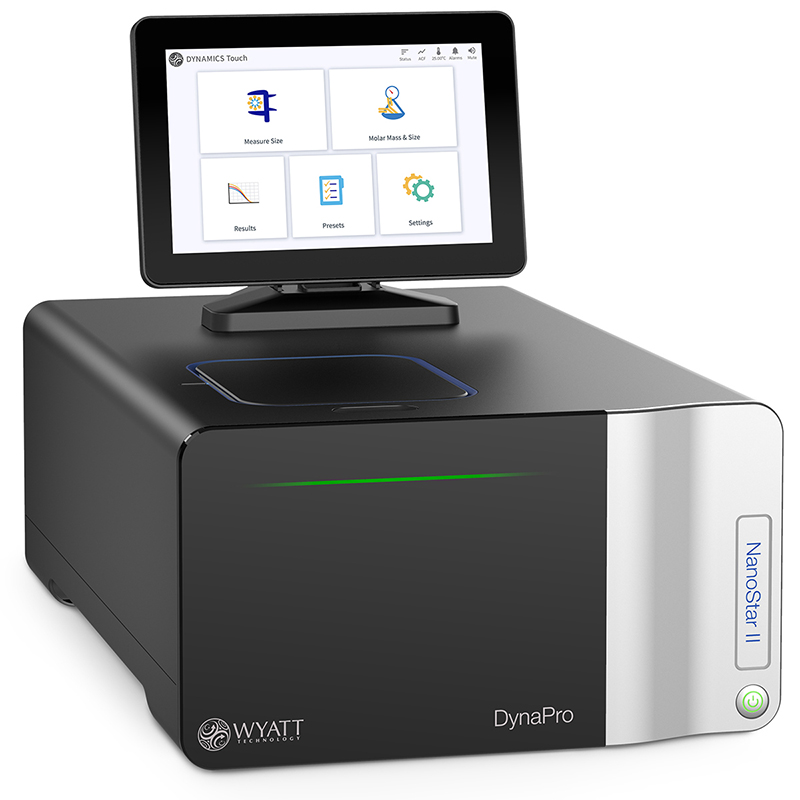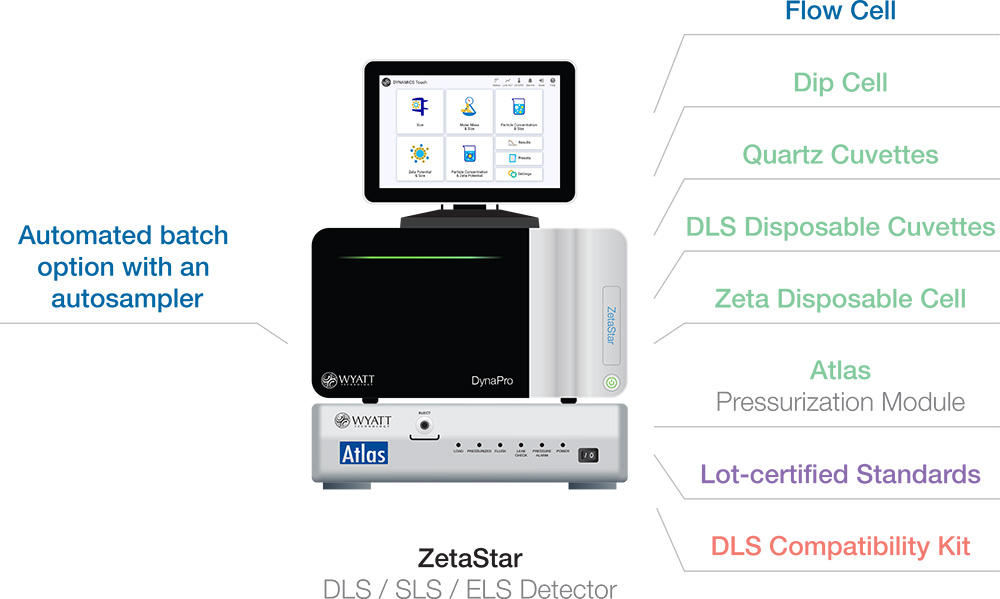ZetaStar
Product Overview
Product Description
Brochure
Advanced Technology
Automation
On-line Operation
Accessories
Software
Specifications
Other DLS & ELS
Publications
Request Info
Walk-up or automated measurements of size, particle concentration and zeta potential
Multi-measurement capabilities in one instrument
The DynaPro™ ZetaStar™ combines dynamic, electrophoretic and static light scattering in order to characterize nanoparticle suspensions and macromolecular solutions. It is simple to use, but a powerful tool that quickly delivers size and polydispersity, zeta potential, particle concentration, molar mass, and turbidity/opalescence for molecules that range in size from angstroms to microns. Analyze and quantify viral vectors, vesicles, lipid nanoparticles, inorganic nanoparticles, nanoemulsions, polymers, peptides, proteins, nucleic acids, and more.
Walk-up operation with DYNAMICS™ Touch™
Designed for casual and non-expert users, DYNAMICS Touch is an intuitive—yet capable—multi-measurement app that resides right on the ZetaStar. Via the touch screen display, DYNAMICS Touch guides measurement setup and data collection. Data quality indicators provide confidence in the results as well as insight to help improve future measurements. Results are instantly displayed on the ZetaStar, while data files and concise PDF reports can be stored on the instrument, transferred via the network or downloaded to a flash drive. You can even send the report to your phone!
Full-featured analyses with DYNAMICS™
DYNAMICS is our powerful PC-based, comprehensive software package for collecting, analyzing, and reporting dynamic, static and electrophoretic light scattering data. It performs advanced analyses and compares multiple data files to identify trends and compile statistics. DYNAMICS can control the ZetaStar and acquire data directly, run a series of automated experiments with an autosampler, or read in DYNAMICS Touch data files.
DYNAMICS is offered with a 21 CFR Part 11 compliant Security Pack option, enabling the use of the ZetaStar in a GMP environment for quality control or at-line process monitoring.
More than just your typical zeta potential detector
Unique among zeta potential detectors, the ZetaStar offers sensitive and robust DLS, ELS, and SLS measurements both in cuvettes and in stop-flow mode using a flow cell.
- DLS/ELS: The ZetaStar performs simultaneous dynamic and electrophoretic light scattering (DLS/ELS) to determine size, polydispersity and zeta potential.
- DLS/SLS: Simultaneous dynamic and static light scattering (DLS/SLS) enables size, polydispersity, particle concentration, molar mass and/or turbidity measurements in as little as 2 µL.
- Automation: As an alternative to manual cuvette-based operations, DLS/ELS can be carried out in fully automated fashion using an autosampler.
- Convenience: DLS/ELS and DLS/SLS can also be carried out in disposable cells to eliminate cuvette cleaning operations and potential sample carryover.
- Low volume: DLS/ELS can be performed with as little as 65 µL of solution, and DLS/SLS with as little as 2 µL.
- Speed: DLS/ELS measurements can take just 15 seconds, and DLS/SLS measurements even less.
- High salt: ZetaStar can measure zeta potential in solutions representative of physiological conditions or formulation buffers with high sensitivity and no damage to fragile biological samples .
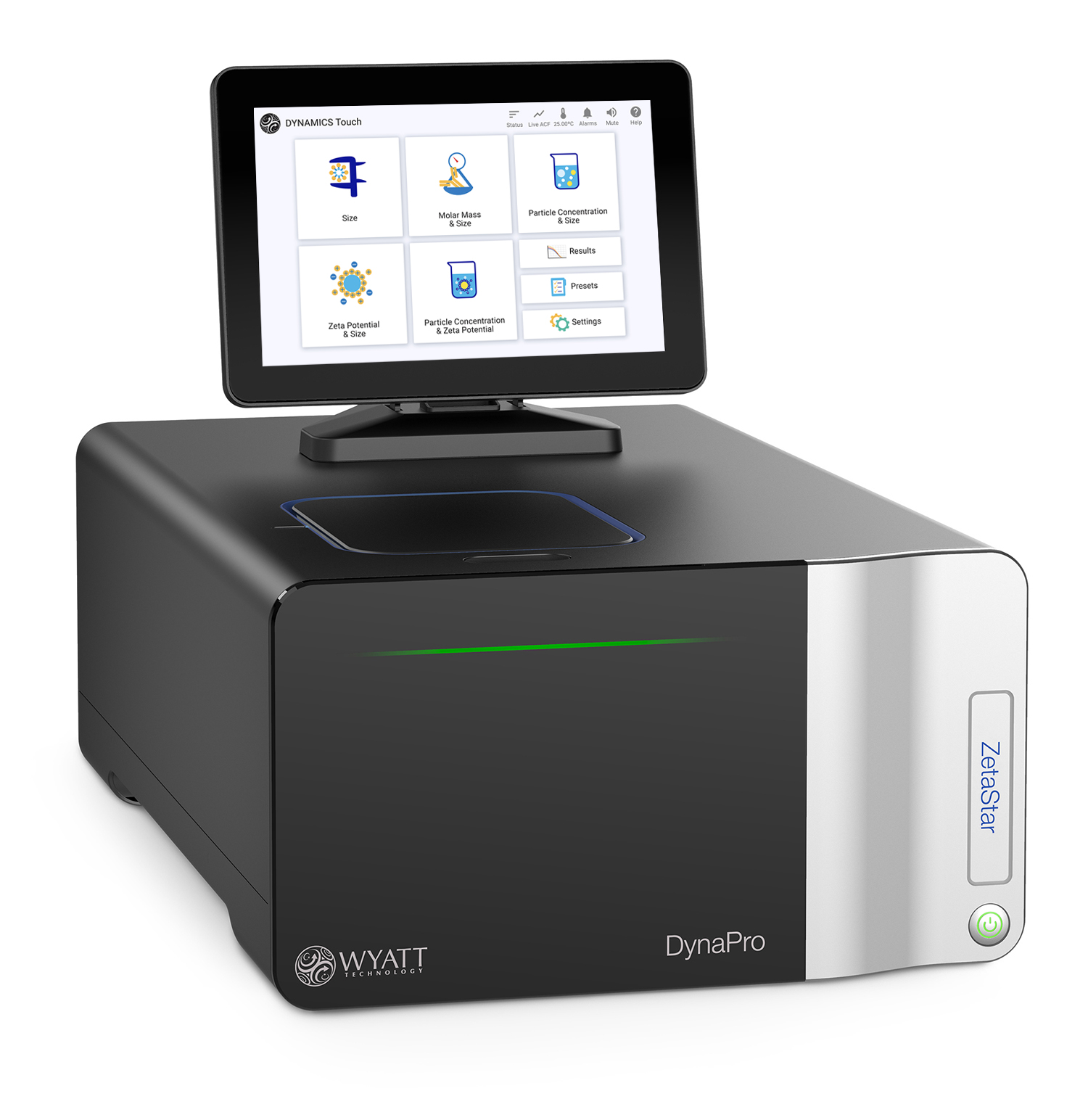
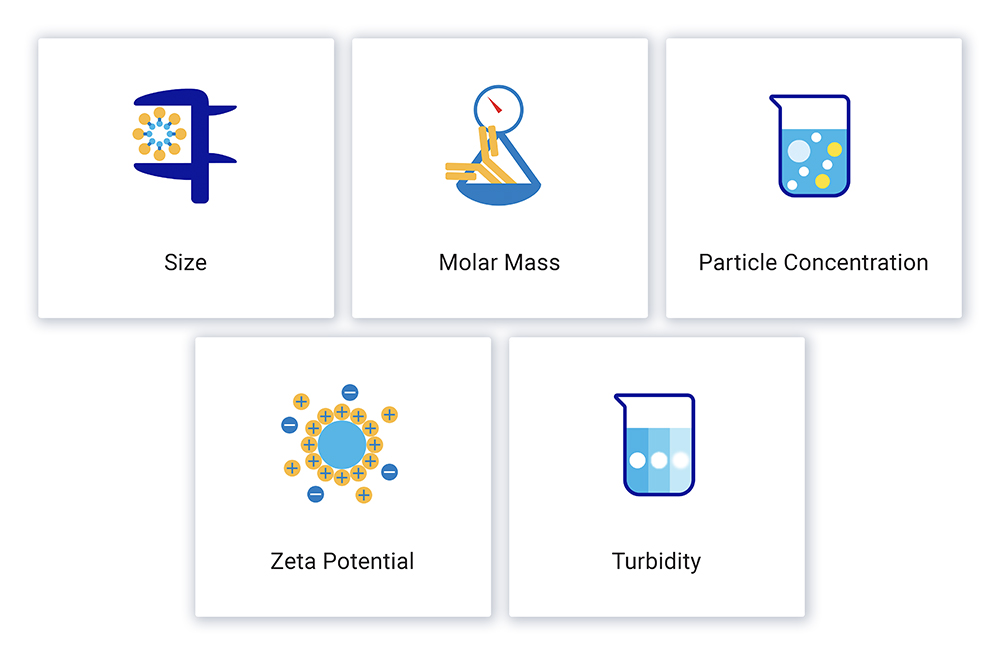
Quick and easy: Coupled with the user-friendly on-board app, DYNAMICS Touch, quick and robust results are just a few clicks away.
Maximum power: Paired with the full power of PC-based DYNAMICS, the ZetaStar can determine extended solution properties including:
- Colloidal stability: second virial coefficient (A2 or B22) and diffusion interaction parameter (kD), turbidity or opalescence
- Thermal stability: temperature of protein melting or aggregation onset (Tm, Tonset, Tagg)
- Accelerate degradation kinetics: the evolution of size and molar mass with time at elevated temperature.
Minimum downtime: Constructed of a set of field-replaceable modules with no need for optical alignment, the ZetaStar need never leave your lab for maintenance. A Wyatt technician can make most repairs on-site.
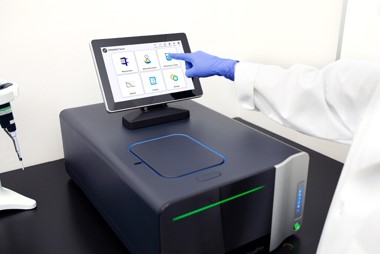
ZetaStar features an intuitive onboard app, DYNAMICS Touch, which enables anyone to walk up to the instrument, insert a cuvette with sample and be guided through a measurement.
Walk-up or automated measurements of size, particle concentration and zeta potential.
Click here to request a copy of our ZetaStar brochure.
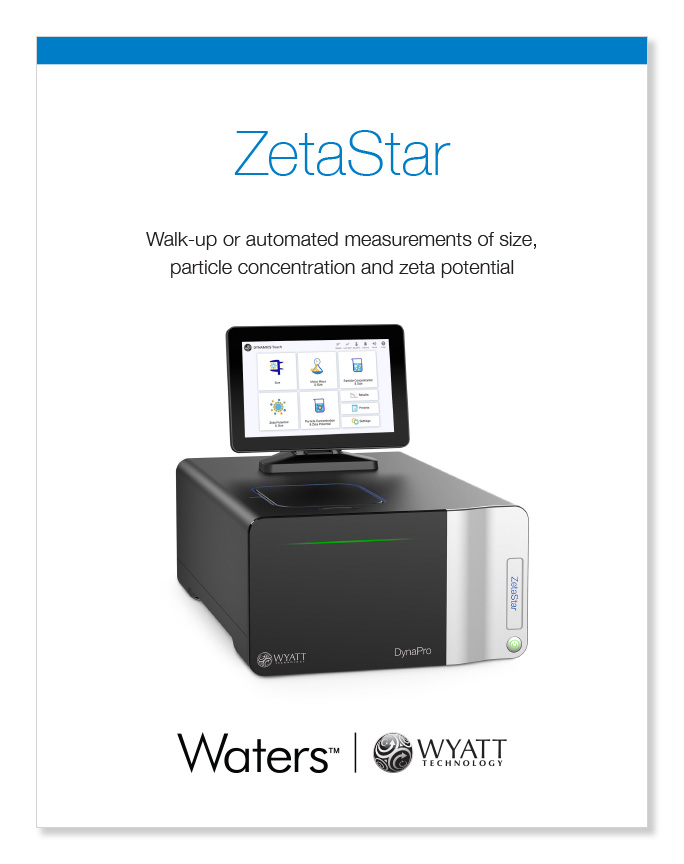
Multiple state-of-the-art advances in technology give the ZetaStar significant benefits over other DLS/ELS instruments in performance, application range and maintainability.
FIDELIS technology
ZetaStar implements an advanced, solid-state interferometer for laser Doppler measurement of particle motion under an applied electric field. Dubbed FIDELIS for ‘Fiber Interferometric Doppler Electrophoretic Light Scattering’, the mechanical oscillations of conventional PALS instruments have been replaced in the ZetaStar with a fiber interferometer incorporating a pair of acousto-optic modulators (AOMs) and special polarization-maintaining optical fibers.
AOMs increase the modulation frequency to 10kHz, which improves the signal to noise ratio and sensitivity. The entire FIDELIS unit—the reference beam fibers, AOMs, probe beam fiber, beam combiner and detector—are a single monolith that provides high-fidelity ELS measurements with higher bandwidth and resolution than traditional PALS.
Furthermore, fiber-coupled optics inherently maintain optical alignment and optical surface cleanliness. FIDELIS technology constitutes a set of field-replaceable modules for maximum instrument uptime and user productivity. Latin for “faithful”, FIDELIS means top-quality data with no maintenance or adjustments required. Additional details about how FIDELIS makes ELS measurements are available in the ELS theory page.
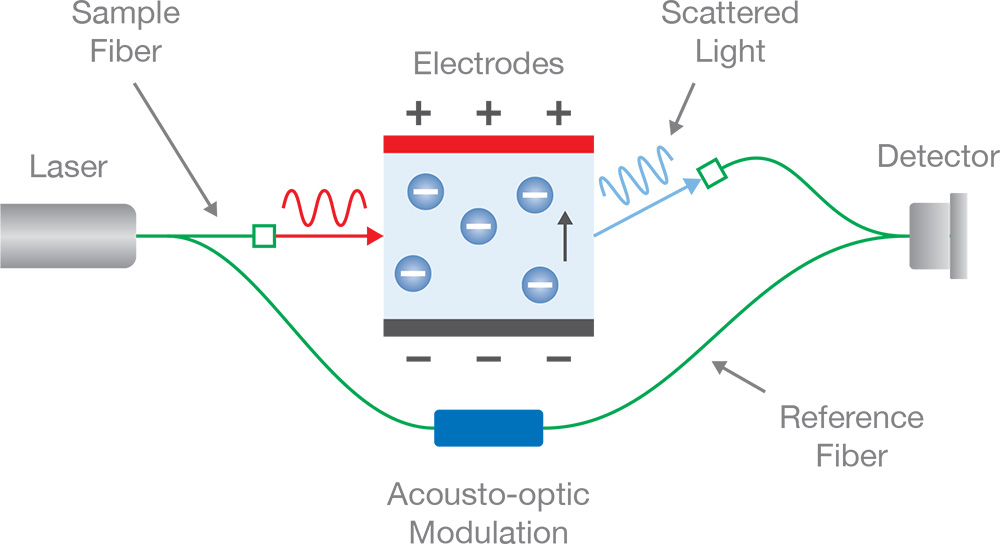
FIDELIS technology employs fiber-coupled elements: laser, splitter, acousto-optic modulator and beam combiner, for a robust and monolithic ELS optical system providing excellent sensitivity and speed.
Parallel, optimized optical channels
ZetaStar includes three separate, parallel detection channels, each of which is designed for a specific detection task. Up to two of these may be utilized at once to minimize overall measurement time.
- DLS: DLS measurements require very high gain and fast response times in order to resolve the arrival times of individual photons. The ZetaStar’s fiber-coupled, temperature-stabilized, avalanche photodiode single-photon counting module (SPCM) provides 100-nanosecond timing data to a multi-tau, 512-bin correlator in order to determine Rh from 0.2 nm to 1 micron. Optical fibers at one of the scattering angles of 90° (side-scattering) and 163.5° (back-scattering) are selected by software to feed the SPCM, depending on the desired configuration.
- SLS: SPCMs typically have low dynamic range and significant non-linearity, making them sub-optimal for SLS and ELS. The ZetaStar’s 90° SLS channel features a highly linear, low-noise photodiode that covers six orders of magnitude in range - in fact, the same photodiode used in our on-line multi-angle light scattering (MALS) detectors. This detector guarantees sensitive and accurate particle concentration data as well as absolute molar mass from 300 Da to 1 MDa (the upper limit depends on the molecular conformation and the measured Rh). The high linear range is essential for turbidity measurements to better capture the multiple scattering events from turbid samples.
- ELS: Similar to SLS, ELS measurements are not well served by high-gain, nonlinear SPCMs. Instead, the light scattered into the 10° angle is captured and interfered with the modulated reference beam on a low-noise, wide-dynamic-range photodiode that is optimized for the FIDELIS frequency range below 20 kHz.
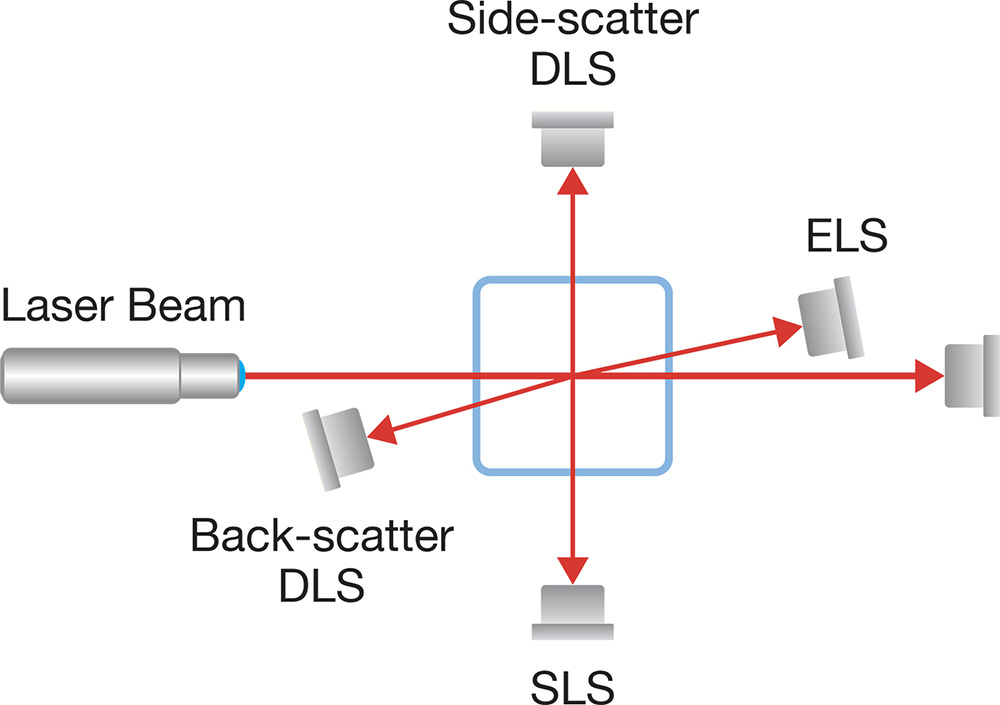
The ZetaStar measures back-scatter dynamic light scattering simultaneously with ELS for size, polydispersity and zeta potential, or side-scatter DLS together with 90° SLS to determine size, polydispersity and particle concentration (or molar mass for macromolecules).
Cell pressurization for high-conductivity solutions
Highly conductive solutions present a significant challenge for ELS. In order to produce an appreciable electric field and induce particle motion, high voltage must be applied. However, high voltage generates strong electrolysis at the electrodes, causing the formation of gas bubbles that interfere with the electric current and induce noise in the measurement.
The ZetaStar’s PEEK flow cell may be pressurized in order to prevent bubble formation, eliminating a key source of measurement noise.
In addition to flow cell pressurization, ZetaStar offers additional advantages for measuring zeta potential in high-conductivity solutions.
- The optimized design of the PEEK flow cell allows the instrument to induce strong local fields while applying much lower voltages. This in turn slows electrode degradation, reduces the level of Joule heating, and overall better preservation of fragile biological samples.
- In addition, solid platinum foil electrodes used in the flow cell are less reactive than more common electrode materials, producing less surface chemistry and accompanying degradation.
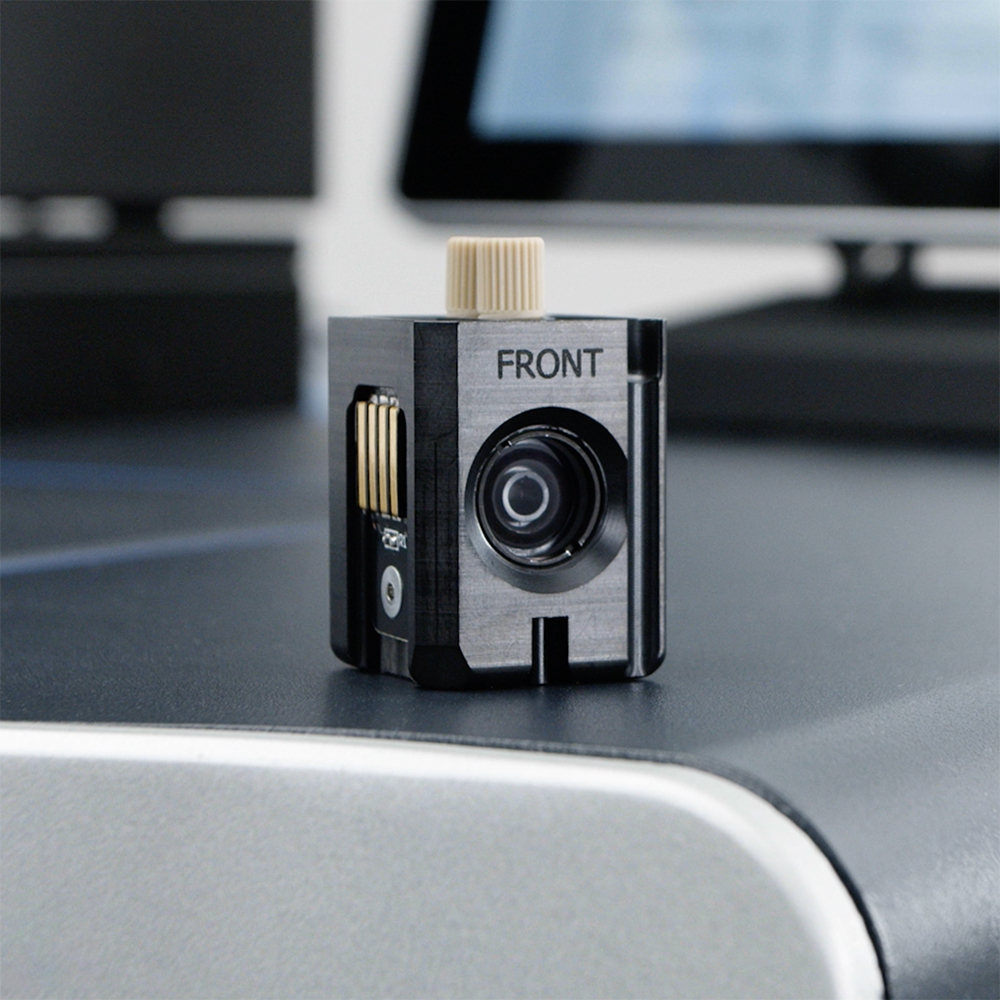
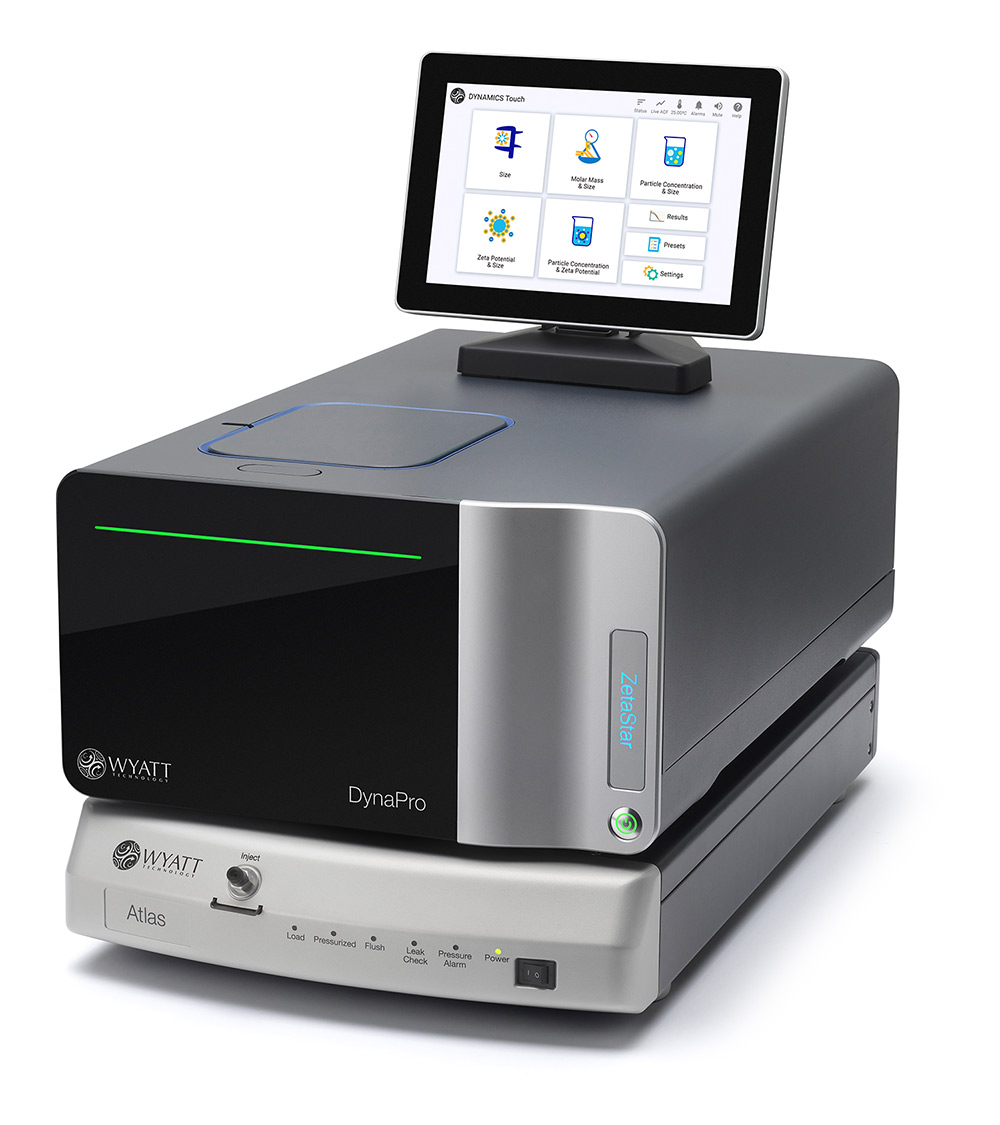
The Atlas accessory pressurizes the flow cell to allow for measurements of high salt solutions up to 300mM NaCl.
High applied field for low-conductivity solvents
Conversely, when high ionic strength is not an issue, you want to maximize mobility signals for the fastest and most accurate results. In addition to very low currents, the ZetaStar can apply electric fields of hundreds of V/cm to extract robust signals in the presence of poorly conducting samples. The advanced technology incorporated into this instrument makes it the most versatile ELS detector available.
Autosampler operation
The ZetaStar flow cell enables automated sample handling with an Arc™ HPLC autosampler. An autosampler and pump are controlled directly by DYNAMICS software to flush the system, inject sample, perform the measurement, and repeat with the next sample. DYNAMICS can be programmed to run an entire sequence, with solvent flushes between samples to prevent carryover.
Automating buffer conditions
Do you need to measure zeta potential or net molecular charge as a function of concentration, pH, ionic strength or excipient? The autosampler can be used to run pre-prepared samples at varying buffer conditions, saving you the time required to run each set individually.
Automation not for you?
If automation is not required, several convenient options are available for manual operation: samples may be injected directly into the flow cell (with or without the Atlas) or measured by means of quartz or single-use cuvettes, and dip electrodes for ELS.
DLS/SLS/ELS
If a sample must be analyzed by all three techniques, it’s easy to run through them with a quartz cell. First, measure DLS & SLS in the quartz cuvette for size, particle concentration, molar mass and/or turbidity. Then insert the dip electrodes and measure DLS & ELS for particle size and zeta potential.
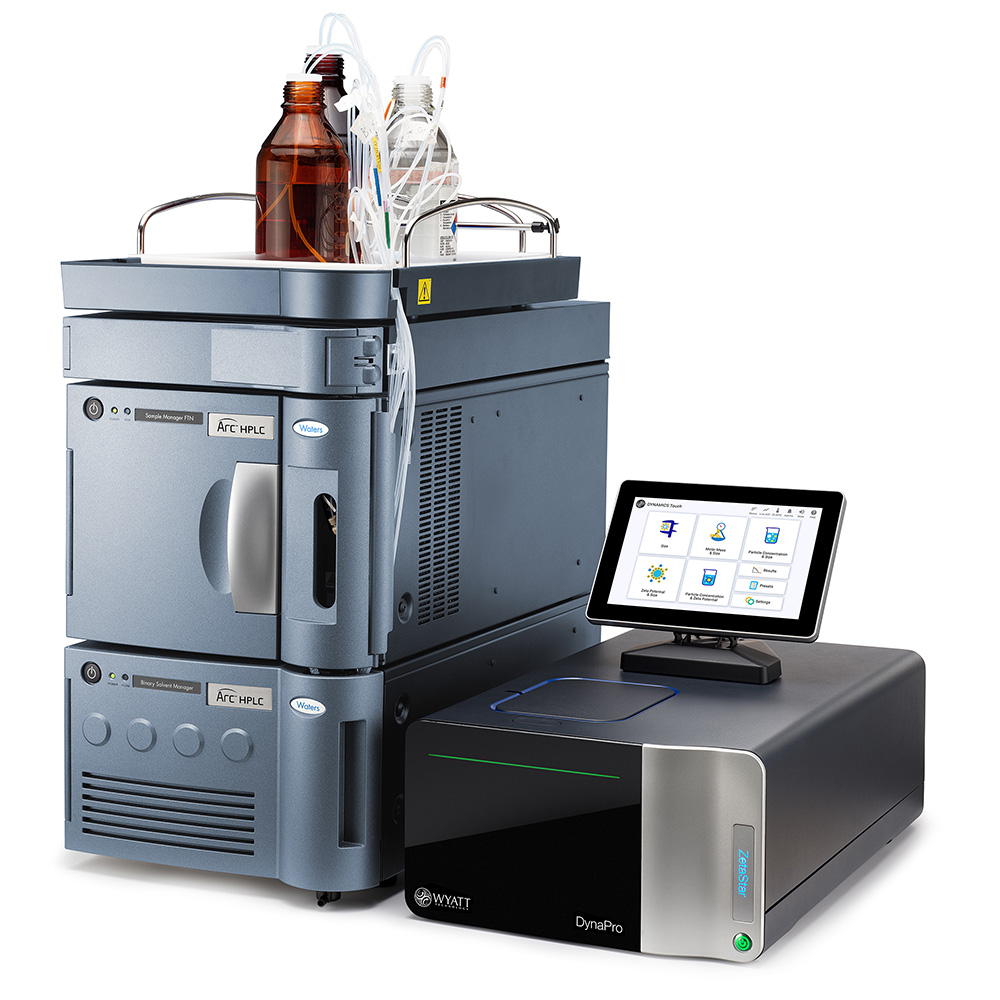
Automated ELS measurements are achieved using the ZetaStar with an Arc™ HPLC.
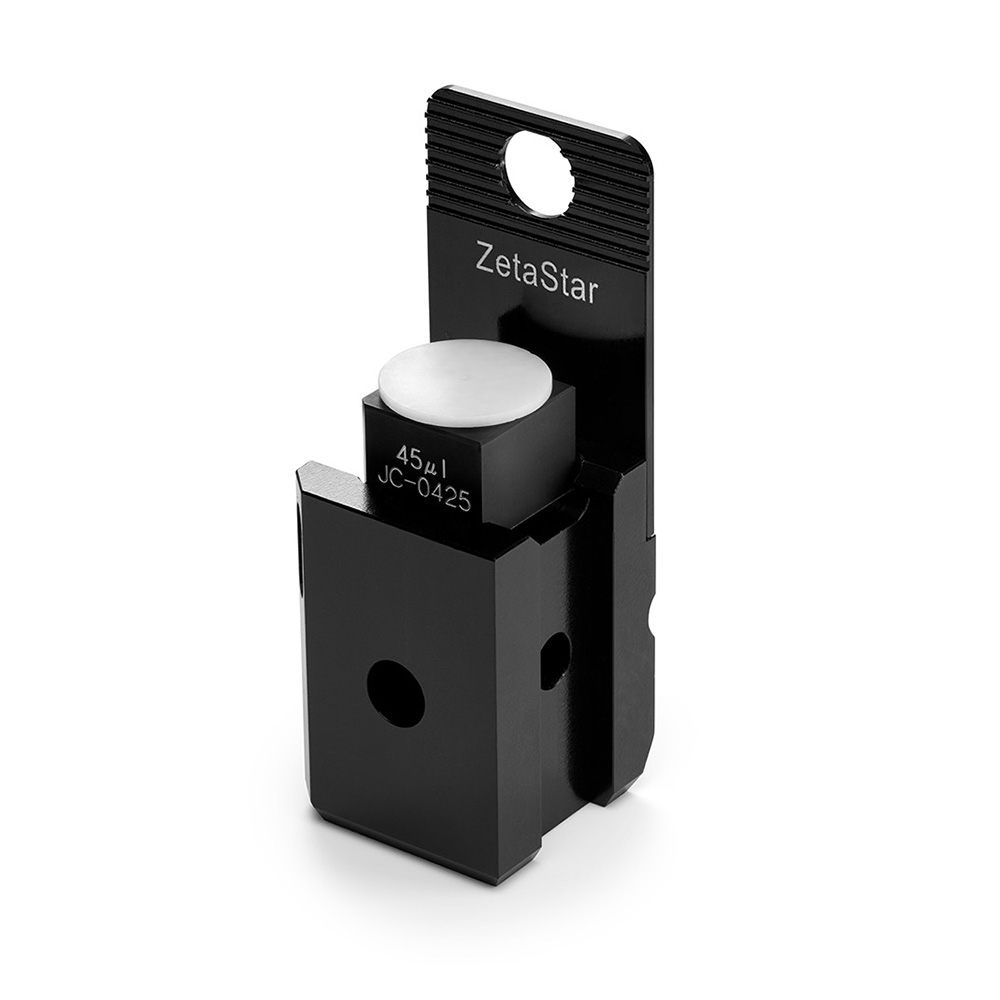
On-line MALS and DLS in a shared flow cell
For heterogeneous nanoparticles or macromolecules samples, measurements in batch (i.e., without fractionation and automated loading) can only go so far in terms of resolution and depth of analysis. For higher resolution and deeper understanding, upstream separation—usually by size—is needed.
Wyatt offers two primary analytical separation methods for use with light scattering: size-exclusion chromatography (SEC) and field-flow fractionation (FFF).
A DAWN multi-angle light scattering (MALS) instrument, often along with other detectors like UV/Vis, refractive index and/or differential viscosity, receives the separated analytes and analyzes nearly homogeneous fractions to characterize distributions of molar mass, size, conformation, composition and more.
- SEC-MALS is primarily applied to macromolecules, while
- FFF-MALS is primarily for nanoparticles, though there is overlap between these techniques.
For smaller molecules such as proteins, MALS cannot measure size directly via the angular dependence and so DLS is an important complementary technique. For nanoparticles, the shape factor Rg:Rh determined by MALS (Rg) and DLS (Rh) is a useful indicator of conformation.
Instead of adding another detector in-line, with the associated band broadening, dilution, signal misalignment and loss of resolution, Wyatt's innovative solution is to share the MALS laser and flow cell with a DLS detector.
With the online DLS option, a ZetaStar can be coupled to a MALS flow cell and switch automatically between on-line and native batch (cuvette) modes. In on-line mode, the ASTRA™ chromatography software connects to the ZetaStar to acquire DLS data for its analyses.
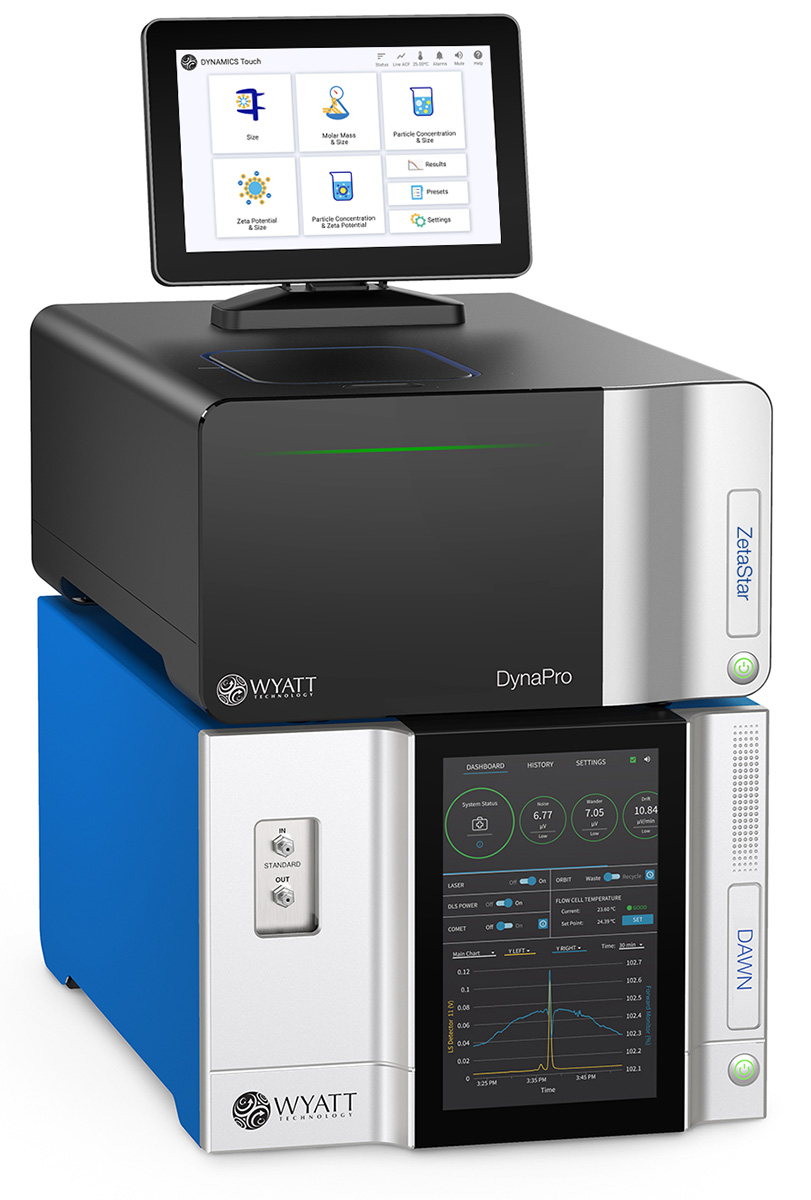
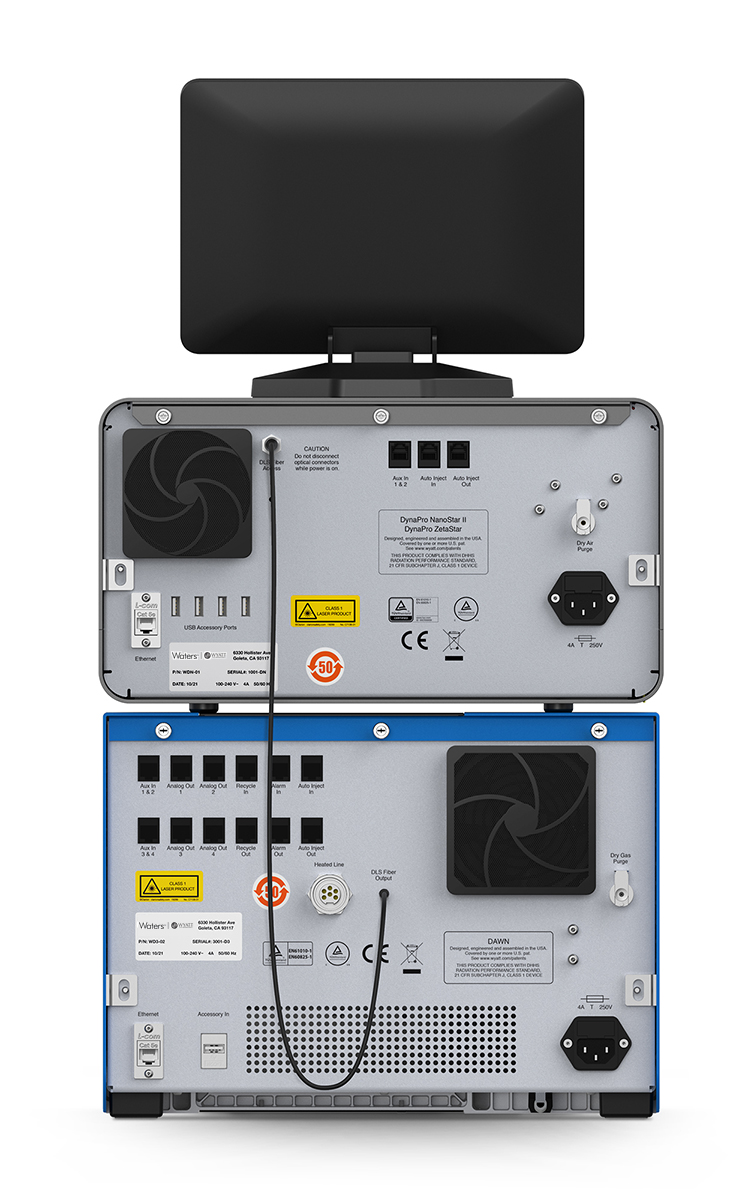
The optical fiber connects from the back of the DAWN to the fiber access port on the ZetaStar, enabling the use of DLS in online SEC-MALS measurements.
DYNAMICS™ - Software for electrophoretic, dynamic and static light scattering measurements in the ZetaStar. Calculates
- size and size distributions
- electrophoretic mobility, zeta potential, and effective charge
- molecular weight
- particle concentration
- thermal stability via thermal ramps as temperature of protein melting or aggregation onset (Tm, Tonset, Tagg)
- colloidal stability via second virial coefficient (A2 or B22) or diffusion interaction parameter (kD)
- turbidity/opalescence
- kinetics from the evolution of size and molar mass with time
DYNAMICS enables comparison of multiple samples and measurements, even if taken on different days or with different instruments. It supports Wyatt’s NanoStar™ and DynaPro™ Plate Reader DLS/SLS instruments as well as the ZetaStar and legacy DLS and ELS instruments. DYNAMICS also controls autosamplers and pumps for hands-off analyses of dozens of samples per day.
DYNAMICS is offered with a 21 CFR Part 11 compliant Security Pack option, enabling the use of the ZetaStar, NanoStar and DynaPro Plate Reader in a GMP environment.
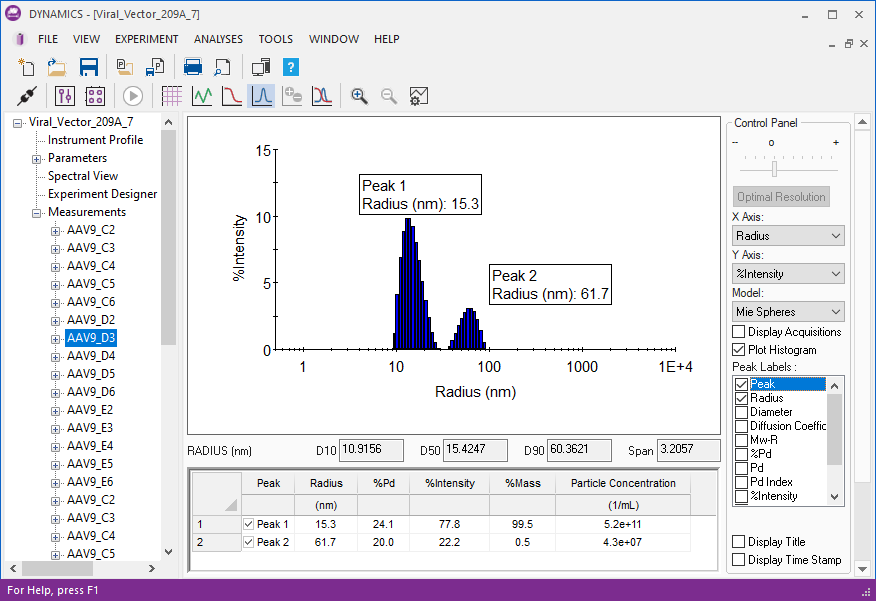
DYNAMICS™ Touch™ - measure and analyze DLS, ELS, and SLS data directly on the ZetaStar touch screen with the on-board DYNAMICS Touch app. Presenting a user-friendly and minimalistic interface, DYNAMICS Touch enables walk-up measurements by non-expert users, guiding them through the measurement process and assessing data quality with actionable feedback. Reports can easily be sent to a network location, USB flash drive or cell phone. Naturally, you can import your DYNAMICS Touch data into DYNAMICS for advanced data analysis.
DYNAMICS Touch also supports Wyatt's cuvette-based DLS/SLS instrument, NanoStar.
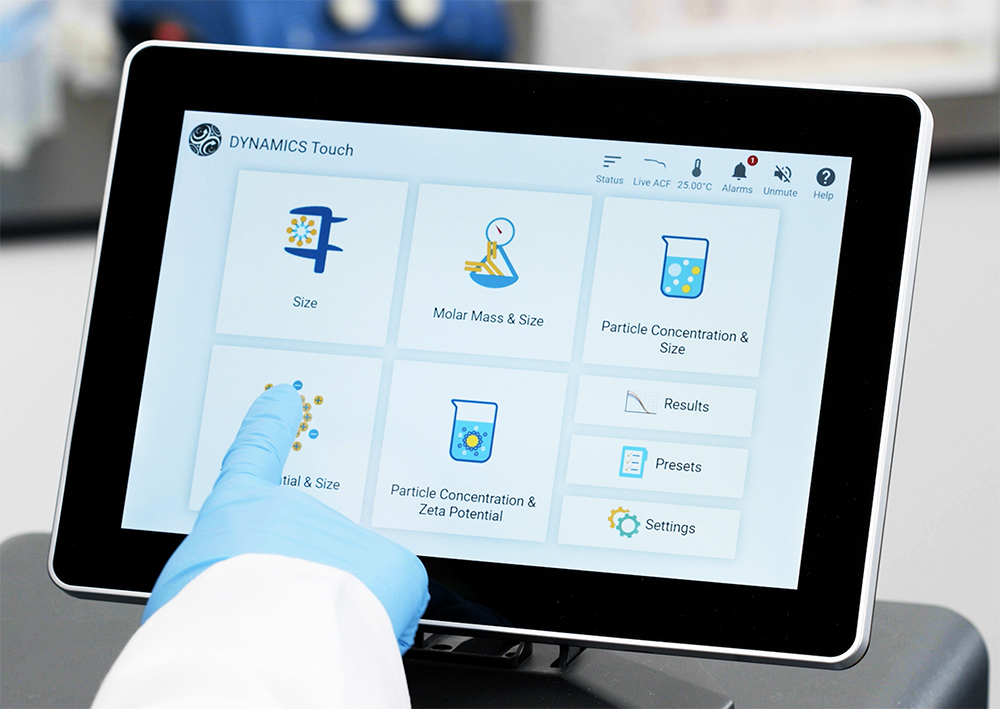
| DLS Measurements | |
| Size Range (Radius) | 0.2 nm to 1 μm (cuvette); 0.2 nm to 400 nm (flow cell) |
| Size Sensitivity | 0.1 mg/mL lysozyme (DLS 90); 1 mg/mL lysozyme (DLS backscattering) |
| Temperature Range | -10 ºC to 120 ºC* |
| Detection Angle | 90º (sidescattering) & 163.5º (backscattering) |
| SLS Measurements | |
| Molecular Weight Range | 300 Da to 10 MDa** |
| Particle Concentration Max Size | 225 nm |
| Particle Concentration Range | 108 to 1015 particles/mL (dependent on particle size) |
| Turbidity Range | 1 to 100 NTU |
| Molecular Weight Sensitivity | 0.1 mg/mL lysozyme |
| Temperature Range | -10 ºC to 120 ºC* |
| Detection Angle | 90º |
| ELS Measurements | |
| Conductivity Range | 0 to 7 mS/cm; 0 to 100 mS/cm with PEEK flow cell and either Atlas (manual injection mode) or autosampler, pump, and backpressure regulator (automated injection mode) |
| Mobility Range | “No practical limit” |
| Mobility Size Range | 1 nm to 50 µm |
| Mobility Sensitivity | 1 mg/mL lysozyme |
| Temperature Range | 4 ºC to 70 ºC* |
| Detection Angle | 10º |
| Wetted Materials | |
| Flow Cell | PEEK, platinum, quartz |
| Zeta Disposable Cell | Cyclic olefin copolymer, polypropylene, 316 stainless steel |
| Dip Cell | Quartz, platinum, polyurethane |
| DLS Disposable Cuvette | Cyclic olefin copolymer |
| Optics | |
| Laser Power Control | Programmable 10% to 100% |
| Laser Wavelength | 785 nm |
| Detectors | ELS, SLS, and DLS detectors |
| Additional Detectors | Laser monitor for active compensation; Forward monitor measures transmitted light for turbidance and laser/cell diagnostics |
| Electronics | |
| Data Acquisition Time | 1 to 3600 sec |
| Correlator | 512 channel, 100 nsec sampling time in a multi-tau layout |
| Auxiliary I/O | Auto Inject contact closure, 2 analog inputs (16 bits, +/- 10 V) |
| USB | 4 USB ports |
| Onboard Computer | |
| Communications | Ethernet |
| Front Panel Display | 162.5 mm, 16-bit, high-resolution touch screen displays signal graphs, instrument settings, and diagnostics |
| Dimensions | 57 cm (L) x 36 cm (W) x 20 cm (H) |
*Dry air or nitrogen required for operation below 20 °C.
**Upper limit depends on conformation: it is limited to a maximum Rh of 50 nm.
Host PC requirements may be found in Computer Requirements.
Specifications subject to change without notice.
Other DLS & ELS instruments
DynaPro™ Plate Reader - The only commercially available instrument that measures DLS and SLS, for size and molar mass, directly in situ in standard 96, 384 or 1536 microwell plates. The non-perturbing DynaPro Plate Reader offers integration with robot liquid handlers and multi-technique plate-based assay protocols. Temperature-controlled over 4 °C to 85 °C.
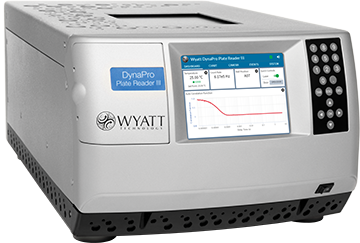
DynaPro™ NanoStar™ - Like the ZetaStar, the NanoStar DLS/SLS instrument offers walk-up convenience with the DYNAMICS Touch on-board app, alongside comprehensive analysis using DYNAMICS on a PC. Measure size, polydispersity, particle concentration, turbidity and molar mass (but not zeta potential or charge). With sample volumes as small as 2 µL and temperature control spanning -10 °C to +120 °C, the NanoStar goes above and beyond traditional cuvette-based DLS instruments. It offers an optimized static light scattering detector in parallel to the DLS detection system in order to determine true molar mass and reliable particle concentrations.
